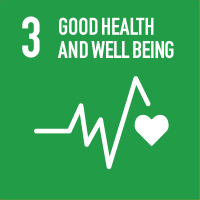Studying at the University of Verona
Here you can find information on the organisational aspects of the Programme, lecture timetables, learning activities and useful contact details for your time at the University, from enrolment to graduation.
Study Plan
This information is intended exclusively for students already enrolled in this course.If you are a new student interested in enrolling, you can find information about the course of study on the course page:
Laurea in Scienze delle attività motorie e sportive - Enrollment from 2025/2026The Study Plan includes all modules, teaching and learning activities that each student will need to undertake during their time at the University.
Please select your Study Plan based on your enrollment year.
1° Year
| Modules | Credits | TAF | SSD |
|---|
Biochemistry of exercise
Principles of sport management
Foreign language B1 level (CB Test)Introduction to chinesiology and sport
2° Year activated in the A.Y. 2022/2023
| Modules | Credits | TAF | SSD |
|---|
Introduction to movement analysis and motor control
Sport and exercise psychology
Training Methodology
3° Year activated in the A.Y. 2023/2024
| Modules | Credits | TAF | SSD |
|---|
Preventive and adapted physical activity
Pharmacology and cardiology applied to physical activity
Diseases of the Locomotor Apparatus
Techniques and Teaching Methods for Individual and Team Sports
| Modules | Credits | TAF | SSD |
|---|
Biochemistry of exercise
Principles of sport management
Foreign language B1 level (CB Test)Introduction to chinesiology and sport
| Modules | Credits | TAF | SSD |
|---|
Introduction to movement analysis and motor control
Sport and exercise psychology
Training Methodology
| Modules | Credits | TAF | SSD |
|---|
Preventive and adapted physical activity
Pharmacology and cardiology applied to physical activity
Diseases of the Locomotor Apparatus
Techniques and Teaching Methods for Individual and Team Sports
| Modules | Credits | TAF | SSD |
|---|
1 MODULE BETWEEN THE FOLLOWING1 MODULE BETWEEN THE FOLLOWINGLegend | Type of training activity (TTA)
TAF (Type of Educational Activity) All courses and activities are classified into different types of educational activities, indicated by a letter.
Theory and pedagogy of fitness (2023/2024)
Teaching code
4S001091
Teacher
Coordinator
Credits
3
Language
Italian
Scientific Disciplinary Sector (SSD)
M-EDF/02 - SPORT SCIENCES AND METHODOLOGY
Period
2° semestre SM dal Feb 26, 2024 al May 30, 2024.
Courses Single
Authorized with reserve
Learning objectives
Acquisition of basic teaching and methodological skills of the main and most popular music fitness activities present in the fitness scene. Students will know the role of music fitness in its various forms within motor activities aimed at maintaining a good state of health and well-being. They will be able to direct simple lessons using the instructor-specific conducting techniques and basic teaching techniques.
Prerequisites and basic notions
Knowledge of the basic movements of the fitness group courses and sufficient executive ability
Program
Role in promoting the health of resistance, strength training (ACSM prescriptions); acute and chronic effects.
Music role and musical structure, basic cueing.
The main stages of a lesson:
Warm up: role and function. Different modes. Warm up phases. Basic bodyweight steps: correct execution, potentially dangerous exercises. Initial stretching. Use of music and specific cueing.
The central phase (work out): different methodologies and techniques based on the physiological / morphological / functional objectives of the course analyzed.
- Free body sequences and with the step tool. Simple teaching methodologies
Basic exercises for muscle conditioning in the main body areas with free body and with specific and non-specific, so-called "makeshift" tools of the fitness group.
Movement terminology and knowledge of the biomechanical action of the main muscle areas.
Use of music in muscle conditioning and cueing.
Forms of monitoring the intensity of the exercise.
Cooling down and stretching
Training in joint mobility and motor control in collective fitness.
The professionalism of the instructor and techniques will communicate you.
Bibliography
Didactic methods
The teaching activity will be carried out both face-to-face, in particular when inherent in the acquisition of theoretical knowledge, and in an exercise and laboratory mode when the activities will be aimed at the students' acquisition of practical skills and abilities.
Learning assessment procedures
Written test with multiple choice and open questions.
Carrying out and conducting parts of the lesson agreed with the teacher on the basis of the program actually carried out.
Evaluation criteria
written test, maximum score 10
practical management: correct executive technique, correct use of cueing, correct respect for the master beat.
Criteria for the composition of the final grade
FINAL SUMMATIVE EVALUATION composed of the sum of evaluation 1+ evaluation 2+ evaluation 3.
Evaluation 1 = Practical + descriptive + exercise book in file format: maximum score = 20
Evaluation 2= Written test with multiple and open answers: maximum score =10
Evaluation 3= Exercises/tasks/assignments/participation: honors and +2
Maximum final mark = 30 cum laude
TO PASS THE EXAM IT IS COMPULSORY TO ACHIEVE THE FOLLOWING EVALUATIONS:
PRACTICE=12/20 WRITTEN =6/10
minimum grade=18
Exam language
ITALIANO

